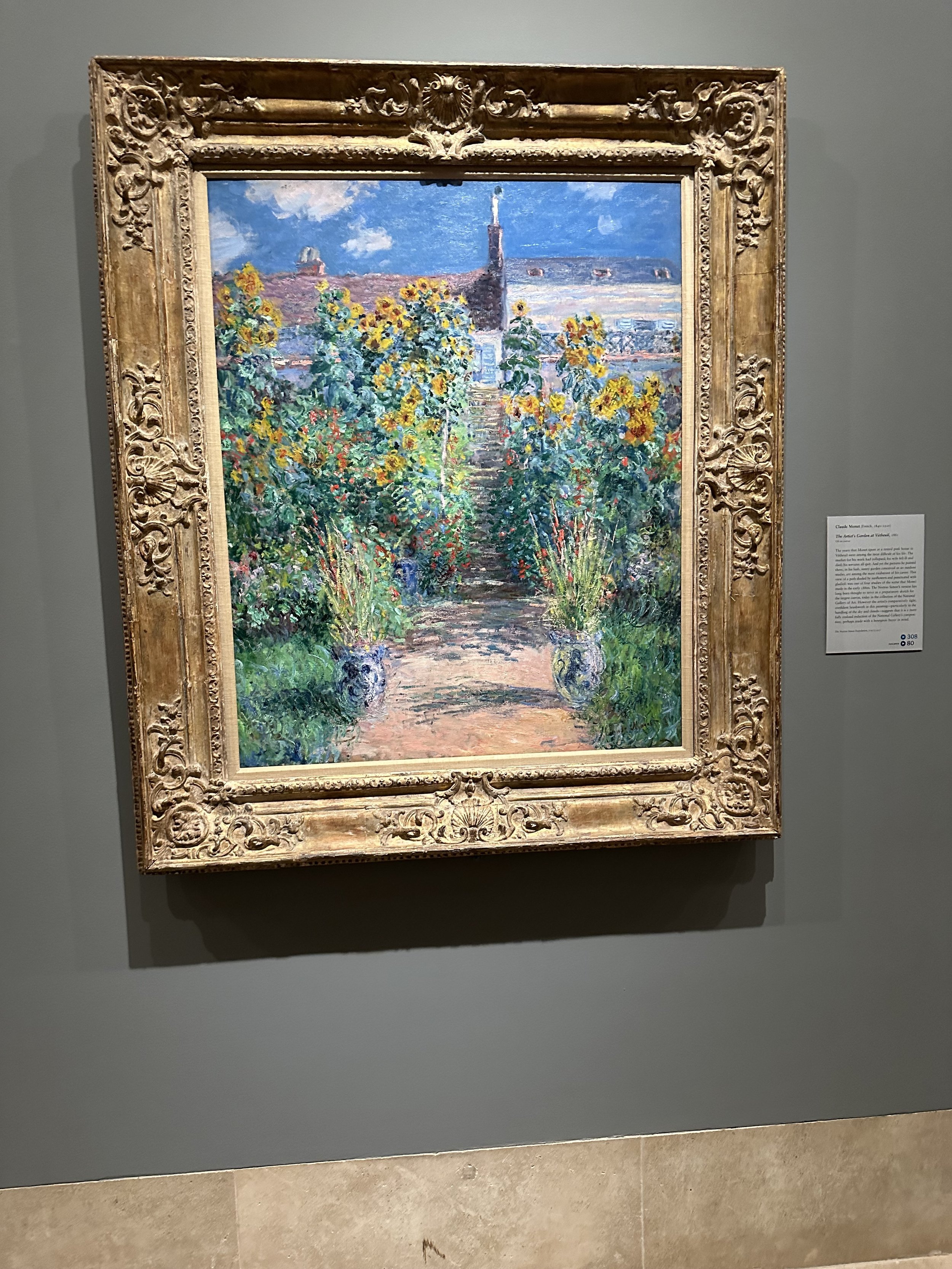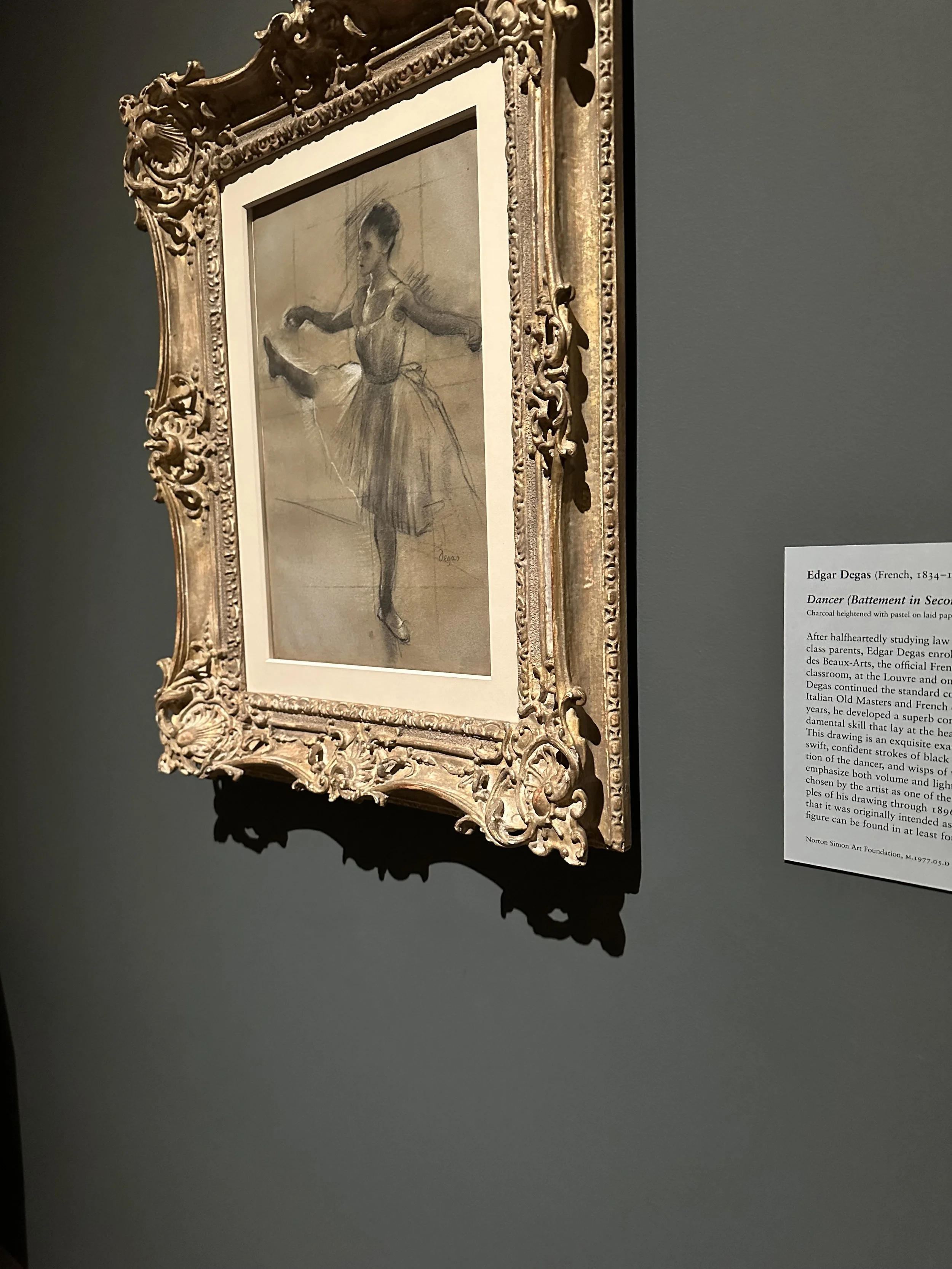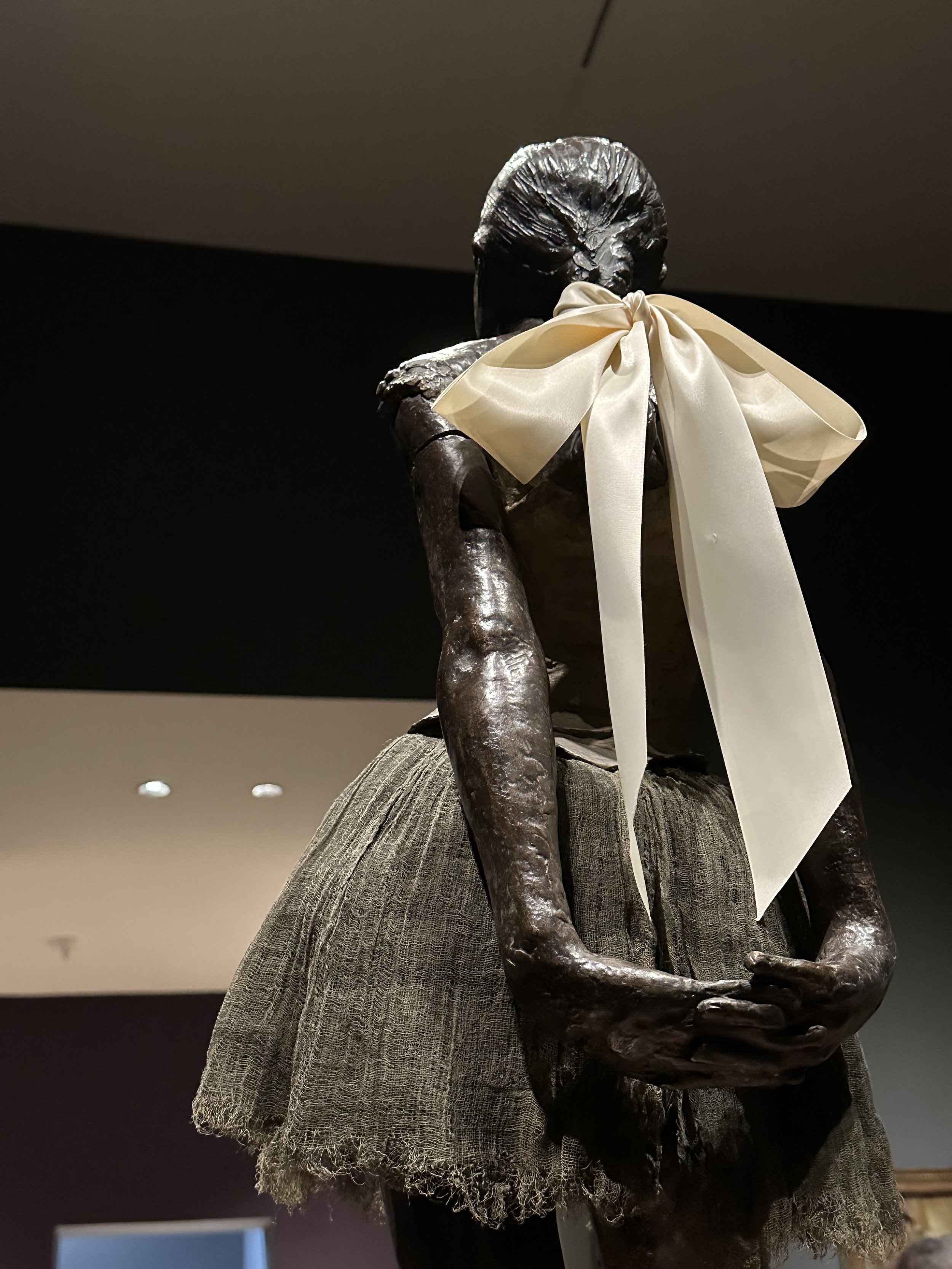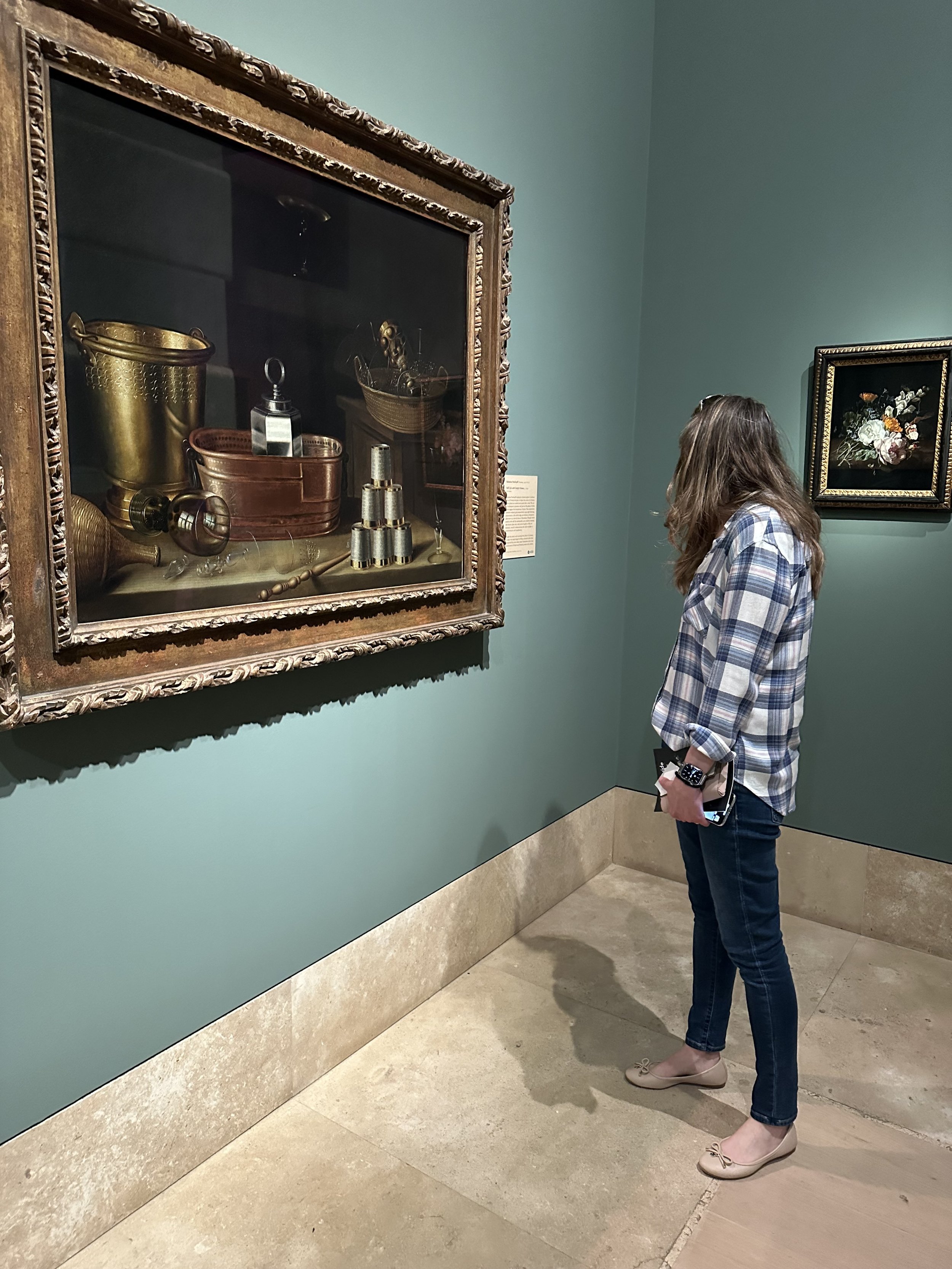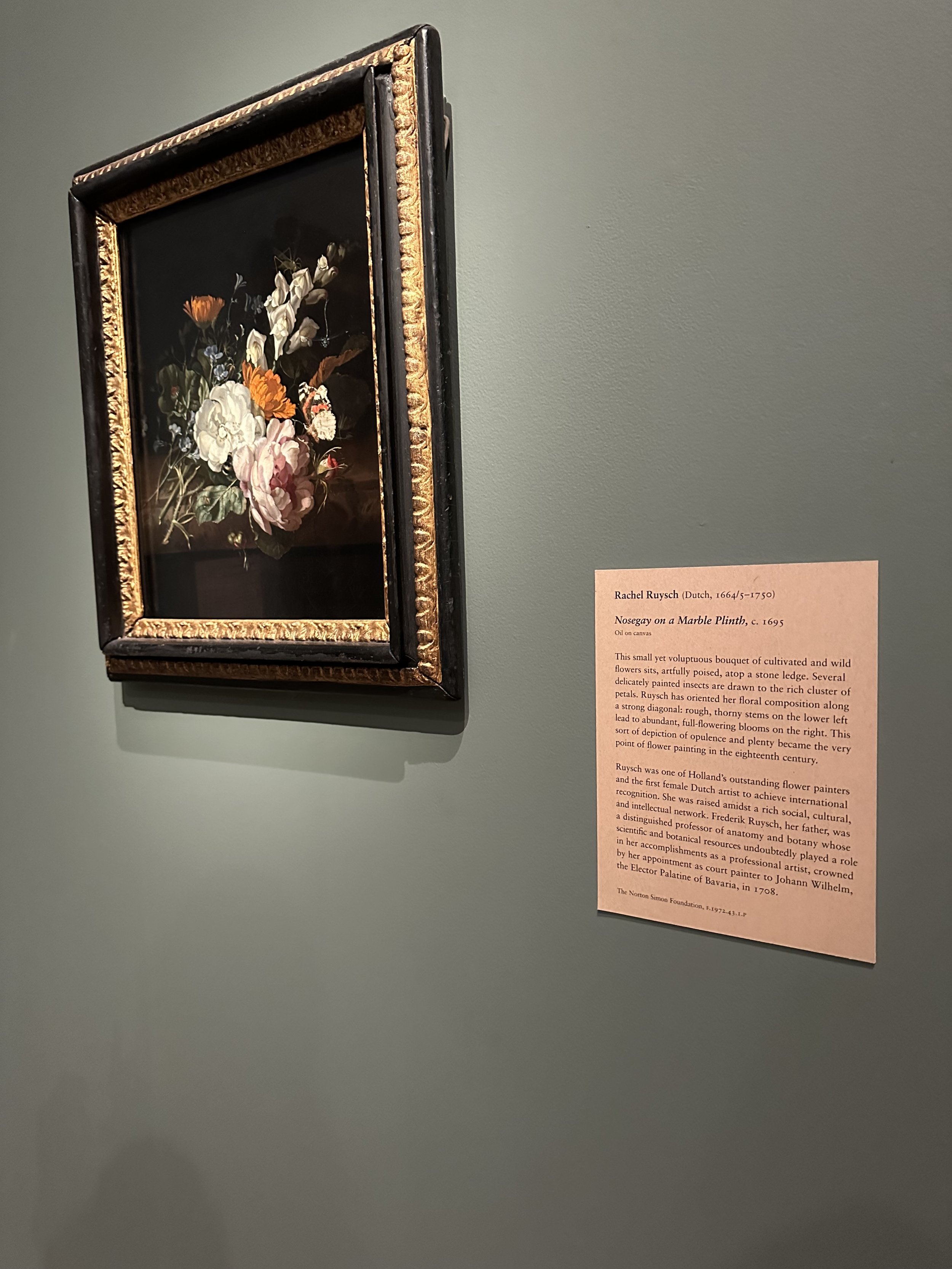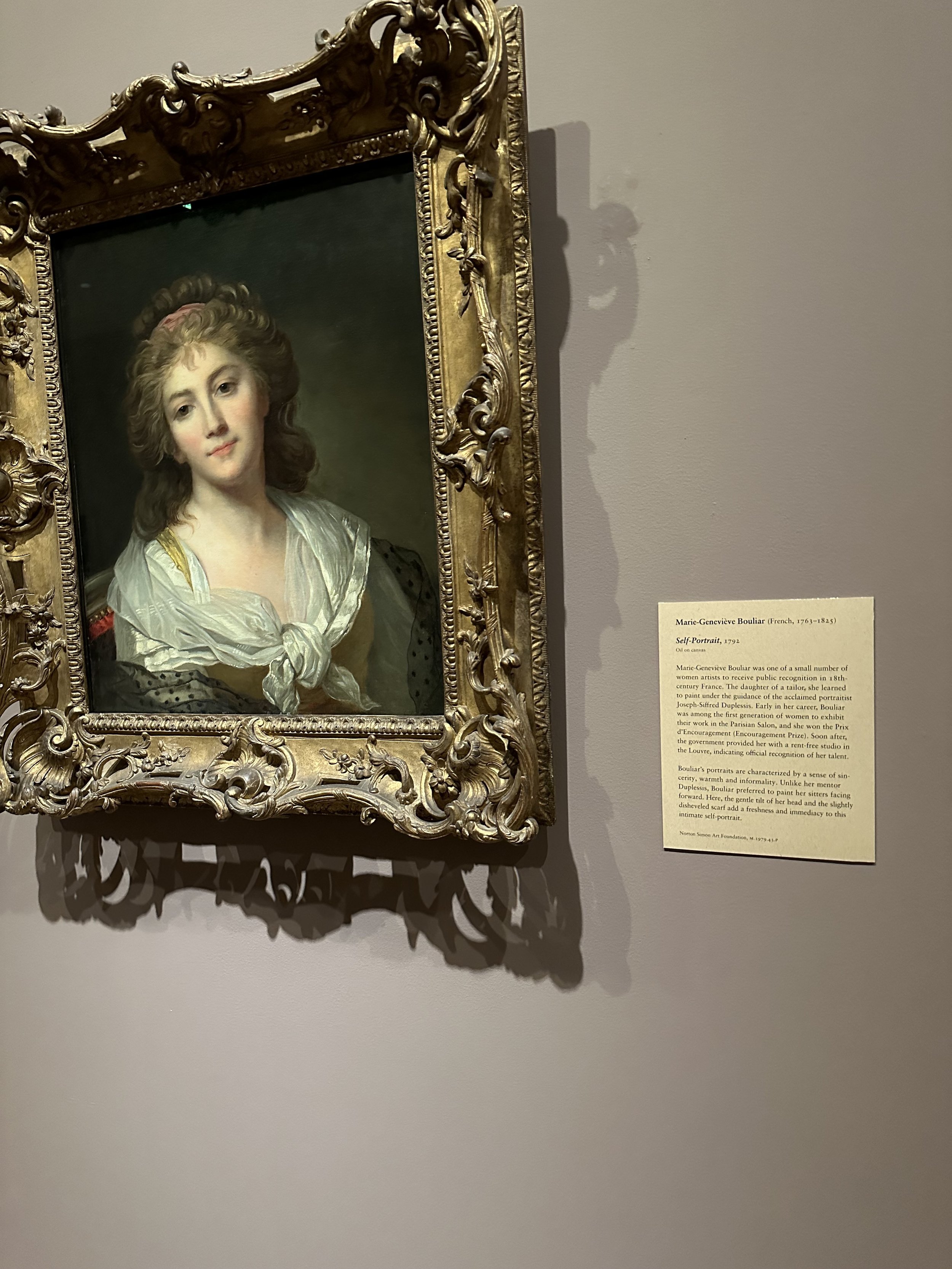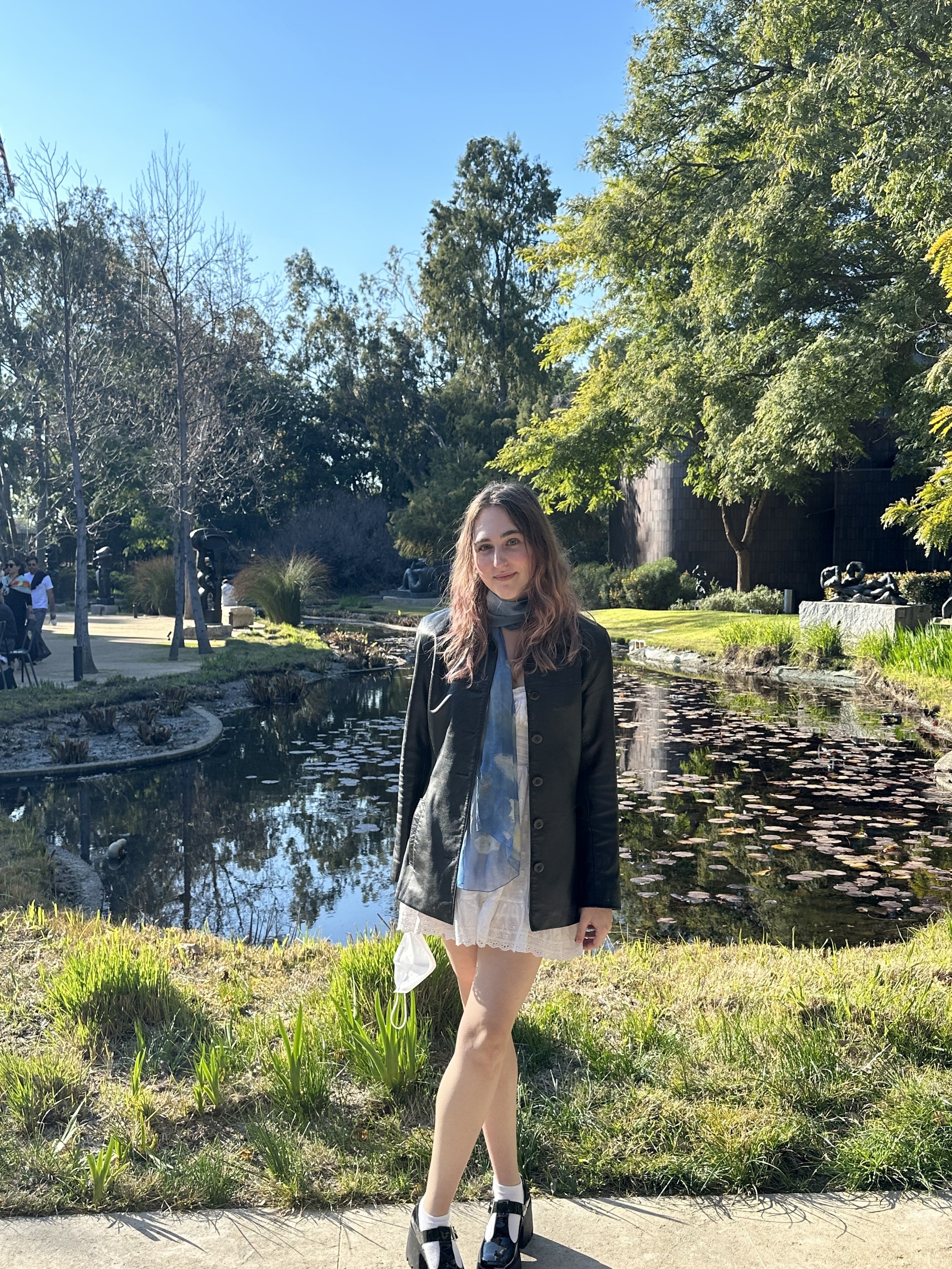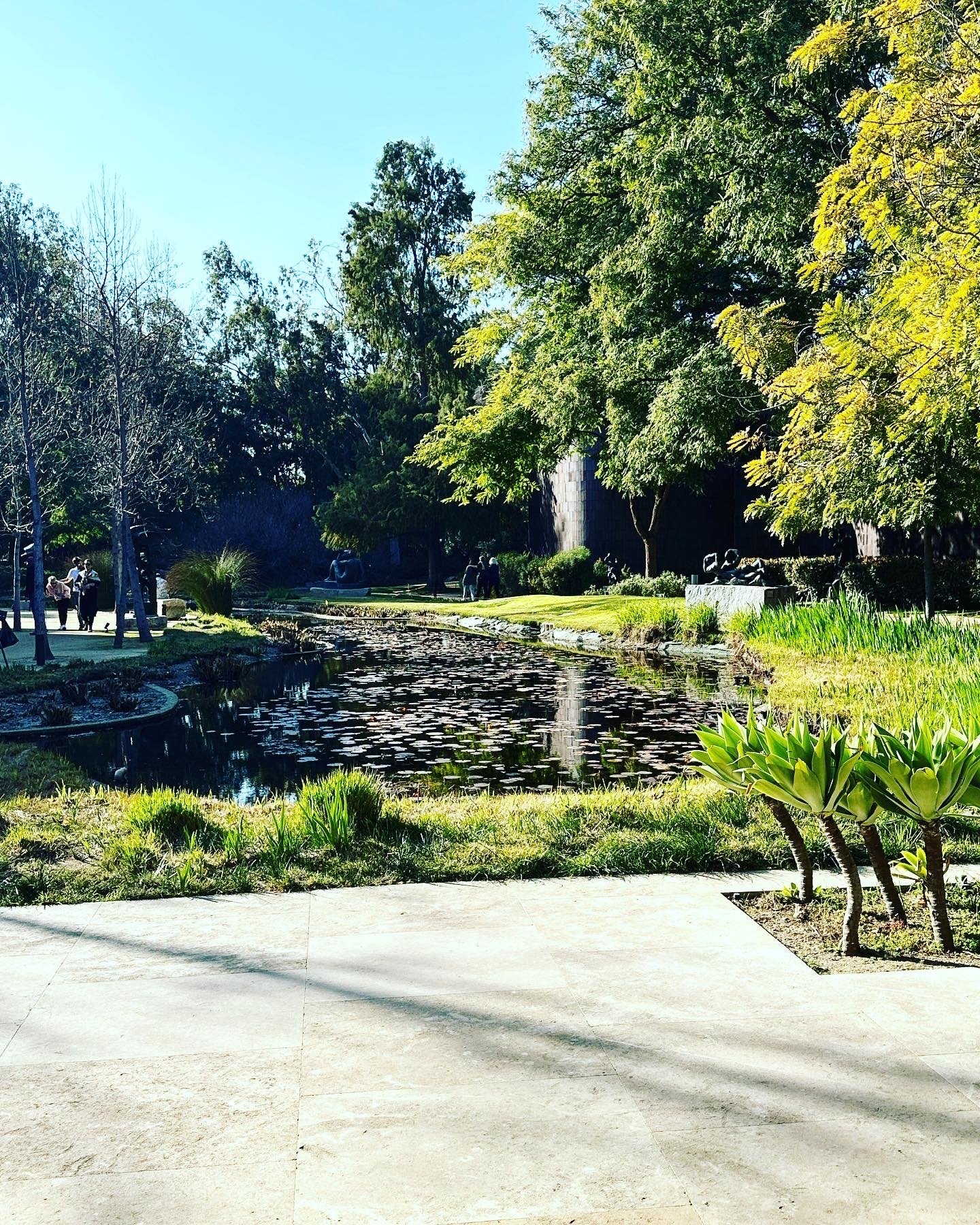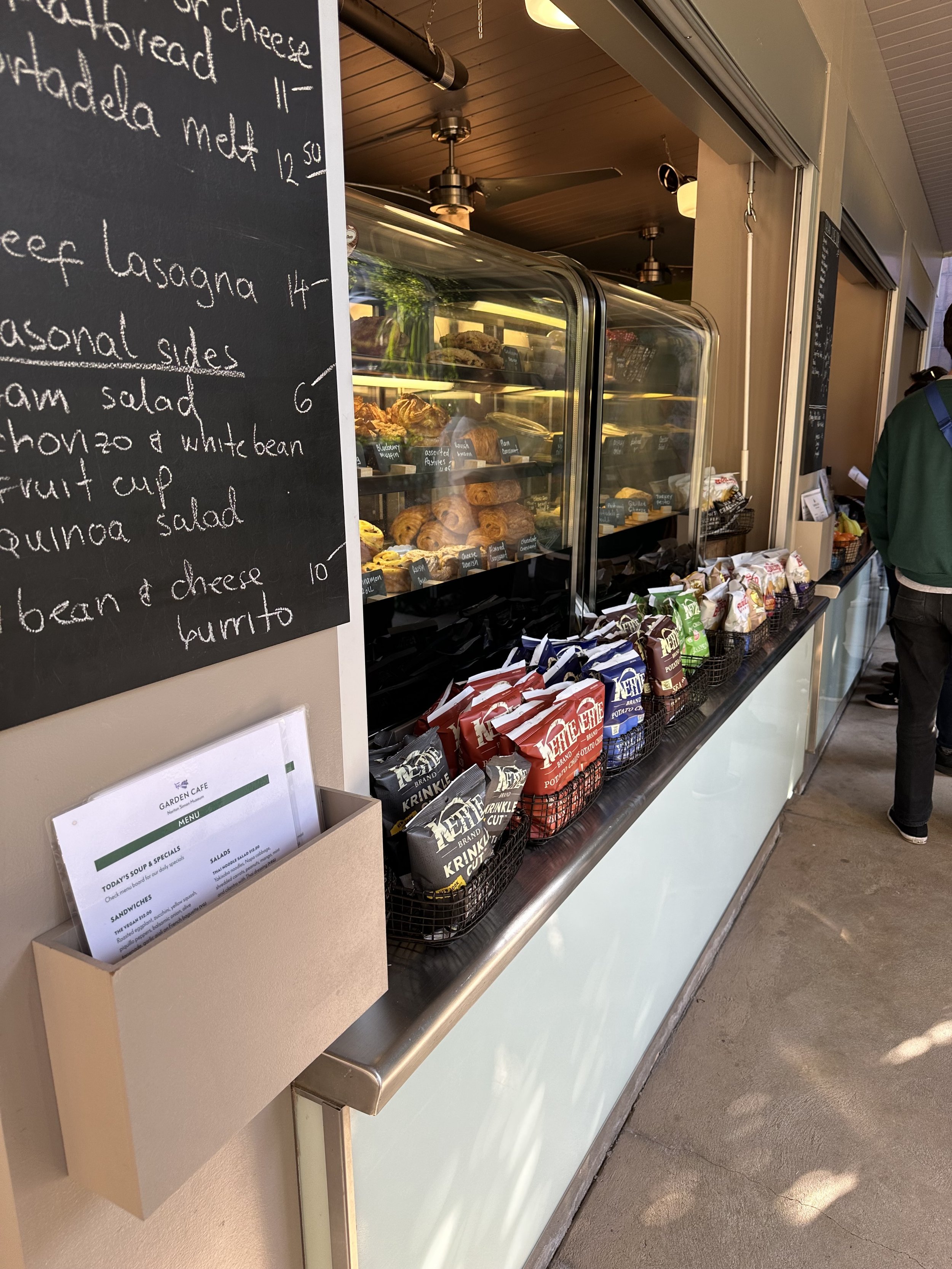A Hidden LA Gem: The Norton Simon Museum in Pasadena
By: Lanie Brice ‘24
Cities like New York, London, Paris, and Washington DC often conjure pictures of days spent bouncing between museums, taking in gorgeous fine art and pieces of history. LA is not a city exactly known for its museums outside of glitzy, entertainment specialized stops like the Academy of Motion Picture Museum and the Grammy Museum. LA also has a few notable modern art museums sprinkled through the city like the Broad and the MOCA. But if you’re looking to go back in time through art, you’ll probably struggle to find inspiration outside of the Getty or the LACMA, known for its once Instagram trending installation.
Especially from USC, the Getty can be quite the trek (and a dicey choice if you’re relying on Uber) despite it being beautiful. Luckily, there’s another hidden gem museum much closer to USC if you’re looking to immerse yourself in fine art, take a walk around a gorgeous pond area, or grab a bite to eat at the outdoor cafè that is the cherry on top of the Parisian vibes. It’s called the Norton Simon Museum, and it’s located just north of us in Pasadena.
This past weekend, I visited the museum for the first time with my mom who loves Impressionism. We were able to snag a parking spot in the free, but limited, parking lot before making our way into the open and airy museum. With my Student ID, I got in for free (making it a perfect excursion for taking a break from campus). Otherwise, admission is $15 a person.
Given that the museum got its start as an institute with many works donated from art dealers and artists that merged with a private art collection (albeit, one that grew to have 8,000 pieces), it offers a much smaller selection than museums you may have visited in the past. This does have an advantage in that you’ll be able to see the majority of or even the entire museum before anyone in your party tires of wandering around.
We started our visit by heading towards the 1800s-1900s wing. This portion of the museum is made up of narrow hallways lined with paintings that open up to wider gallery rooms before narrowing back towards a final massive room that houses a handful of modern art pieces. While this museum doesn’t boast individually iconic paintings, there are some names you’re sure to recognize hanging on the walls including Van Goh, Degas, Monet, Picasso, and Rembrandt. It was interesting to see which of these esteemed artists' paintings wound up in the hands of private art collectors instead of in prominent museums. I didn’t realize that so much of the art from those who defined movements was privately traded as this collection was assembled from the 1950s-1990s.
Because of my mom’s love of art, I spent a lot of time in art museums as a child and even more time in the Impressionist wings. Everyone in my family wound up claiming an artist as “their” artist, the favorite that had to be seen on every trip. Mine was Edgar Degas because his main subjects of interest were the ballerinas of the Paris Opera and their gorgeous, flowing skirts and beautiful forms. They captured my own ballerina heart. For this reason, my favorite room in this wing was a dark gallery devoted to both exhibiting and better preserving Degas’s delicate pastel works that would fade quickly if exposed to light. There were some incredible sketches and highly emotive finished works.
But the crown jewel of the Degas work on display at the Norton Simon Museum is the rather large and very famous sculpture of the young ballerina, “Little Dancer, Aged Fourteen.” This is one of the 28 bronze casts of the original wax sculpture that exist today, and it is dressed in a fabric skirt with a gorgeous satin bow tied in her hair in a nod to the way the wax sculpture was first presented.
Take the time to read the plaques on the walls describing the artwork. This museum offers some of the most insightful, interesting, and sometimes humorous tidbits that I’ve seen published to describe these works of art. This was the only one of the many sculptures Degas created that he chose to exhibit himself, and the end of the plaque notes, “After the exhibition, Degas returned the ‘Little Dancer” to his apartment, where it remained until his death in 1917,’ which felt incredibly sweet in showing his apparent pride in the creation.
After we finished with the wing of modern and Impressionist paintings, we headed over to the much older Renaissance era paintings to take a look around. Historically, neither my mom nor I are huge fans of Renaissance art, but it actually wound up being our favorite section of the museum. Many of these paintings are extremely realistic and lifelike while capturing more emotion than a photo could. The majority of these are unsurprisingly religious, but there are also a number of paintings of queens and royalty, some fascinating pastel self portraits, and some gorgeous, detailed paintings of dresses. There’s also a stunning wall of individual paintings of tulips all hung together up to the ceiling.
One of my favorite parts of this wing, though, was the surprising number of women represented among the ranks of painters. There’s often an impression given that art, especially in the 1600s and 1700s was the exclusive domain of men, but it was the women in these halls that had some of the most striking paintings. There was an eye-catching bouquet painted by Rachel Ruysch in 1695 who was the first female Dutch artist to get international recognition and held the informal title of, “... one of Holland’s outstanding flower painters.” My other favorite painting in this section was a self portrait by Marie-Genevieve Bouliar from 1792. Her notes reveal that she was one of a few women to get recognition for her art in France at the time. The blurb details all the places she exhibited in Paris before concluding, “Soon after, the government provided her with a rent-free studio in the Louvre, indicating official recognition of her talent.”
After seeing these two wings on the main floor, we went out to the garden to enjoy the last bit of the sunshine and the sculpture garden. There’s a gorgeous pond in the back with a gravel path that makes a short loop around it. It’s a quick walk, but it offers a nice chance to chat with whoever you brought with you and soak up a little slice of nature.
While we didn’t stop to eat at the cafe, they did offer an extensive menu. My mom and I both mentioned how good the fluffy raisin buns looked. There’s a large pastry case with as many different flavors and styles of flakey deserts as you can imagine. There’s also salads, lasagna, burritos, melts, and more as well as snacks like Kettle chips and tea. On a warmer day, it’d be a lovely spot to hang out for a while before braving the traffic on the way home.
By the time we made it through the sculpture garden, we realized that we had run out of time for either the museum store or the lower floor that hosts the South and Southeast Asian art collection which was hosting a family Lunar New Year craft event at the time. The museum offers many programs for children and families as well as adult art classes and tours at various times. Leaving some sections unseen only encourages you to return for another visit, and they only display about 40% of their entire collection at a time and also offer rotating exhibitions of loaned art, so every few months, there’ll be something new to discover. Make sure you pay the Norton Simon Museum a visit while you can still take advantage of your student privileges.
Want more from Trojans 360?
Visit Trojans 360 on Facebook & Twitter to stay up to date with more student content! You can also Ask A Trojan an anonymous question, and we’ll try to answer it in a future post. And don’t forget to follow us on Instagram!
Trojans 360 is USC’s official student-run blog. Content created by students, for students.

